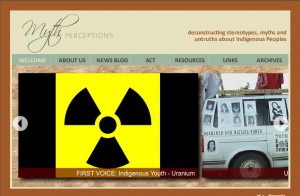This website can be found as a link on the Adult Education Research Conference
( http://www.adulterc.org ) under conference proceedings. The link pages list and contain all the papers submitted during the Annual Conference, held each year in a major Canadian or US university. UBC hosted the 2000 conference. By clicking the detail button beside any of the submissions, all papers submitted that year are listed by title, in list form. All postings are saved in pdf form making them easy to read and print friendly.
The list of submissions each year is both substantial and diverse. Not every paper relates to the main topics in EDET 521. Many, like “The Role of Language in the Preservation of a Culture “
Posted on Friday, January 01, 1999 by Dorothy M. Still Smoking which talks about work done preserving the language of the Blackfoot People in Montana certainly parallel the topics we are currently studying.
This is a very interesting website hosted by the Manataka American Indian Council. The site is full of links to everything from the “Story of Manataka” to the monthly “Smoke Signal News”. The Powwow Events Calendar lists 353 powwows for 2009, conveniently listed by State.
This website embodies everything that is bad about the role that technology plays in portraying negative stereotypes in Native People. Although there are links to “Native Stories and Traditions”, clearly the underlying theme of the website is a form of mass marketing, using “Manataka Sacred Seal” as a medium to sell T-Shirts, and yes we accept Papal, just hit the Add to Cart link. If you need counseling, a free service for members and guests, Annette Broken Owl Greene can be reached by email.
The website has the footprint of the technologically dependant dominant culture and does much to promote common stereotypes of Native people in North America. And they are looking for a new webmaster.
http://www.aboriginalcanada.gc.ca/acp/site.nsf/eng/index.html
This Canadian Government Website is a true Aboriginal portal. The Teacher Resources under Education Topics is filled with countless educational links. http://www.innovationcanada.ca/en/articles/hip-hop-storytellers is a video clip about how aboriginal youth are using modern technology and hip-hop in a traditional storytelling medium.
Ukaliq, the Artic Hare link contains Inuit stories, told for generations following their oral tradition, likely written down for the first time. Scientific studies stand beside tradition art and uses while a game and activity section is full of numerous activities and videos for a very detailed study of the Arctic Hare. The website uses new internet technologies to show how the 3-D bone structure of the Hare is transformed into traditional soapstone and walrus tusk carvings. The entire site, and especially the specific links are a great example of modern technology capturing and preserving traditional aboriginal culture, traditions, art and history
http://nativeappropriations.blogspot.com/2010/07/best-native-films-by-or-about.html
This website seems to encompass many of the major topics we have read and learned about in Module 1 of ECET 521, especially during week 2. There is a listing of best Native Films ( by or about Indigenous people ) Many of the films are “Hollywood” big budget films, produced, directed and acted by Indigenous people. The Blog section is extremely interesting were viewers have added to the list of films, and commented about the numerous appropriations depicted. The blogs are really a must read. Written by indigenous and non-indigenous people, they highlight how technology can unite a community of like-minded, like thinking people. Blog writers engage is a unique form of sharing, about topics that have local relevance, at least to them.
The website also contains substantial “national film board” style of documentaries about Indigenous people, how they have been exploited, and how technology has been double-edged, a helping tool in some ways and a culturally destructive tool in another. I leave you with a link to a full-length film about the standoff near Oka Quebec. This site is sure to add much content to your digital video library. http://www.nfb.ca/film/kanehsatake_270_years_of_resistance/
http://www.usatoday.com/life/movies/2003-01-27-native-usat_x.htm
http://www.csmonitor.com/2002/1122/p13s02-almo.html/(page)/2
http://www.nativepeoples.com/article/articles/174/1/COYOTE-GOES-HOLLYWOOD
Three separate websites with a common theme. They offer a simple but pointed discourse regarding Native Americans in movies. There is common belief that for many the view or knowledge they have about Native Americans is what they have seen in the movies. To change these distorted representations is both costly and difficult. People do not want to see aboriginal people as they are today, minus the headdress and the war-paint. With today’s enormous production and marketing costs, truform aboriginal movies, even with aboriginal directors and actors, are very risky business. But that is not to say developments have not or are not progressing. Robert Redford has been a leader in his Sundance Studios, and native director Chris Eyre has made huge inroads in contemporary portrails of aboriginal people in his movies. The development of online streaming is starting to have huge impact on aboriginal film. Production costs can be affordable, and the target audience, be it mainstream North America or a specific indigenous people in Southern New Mexico are becoming increasingly easier to access.

